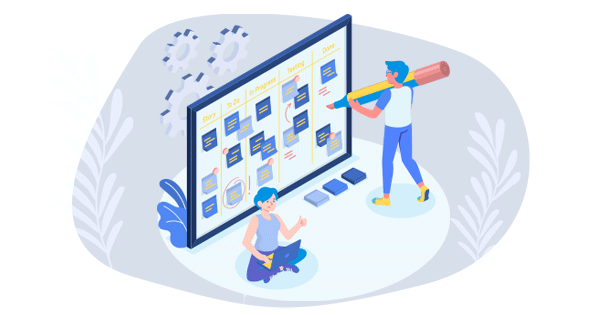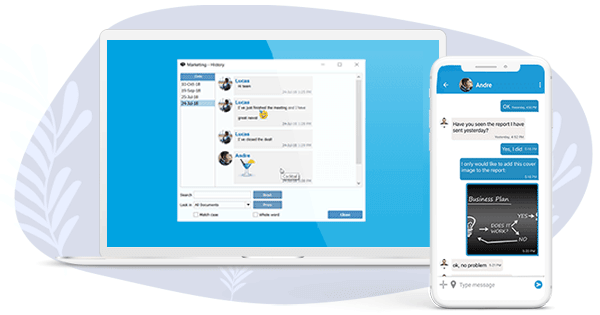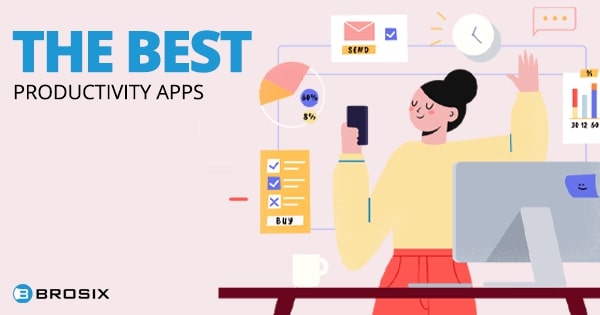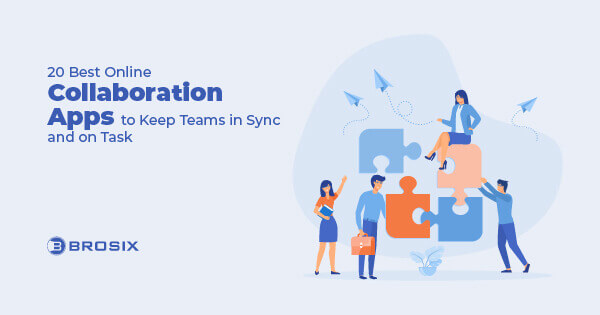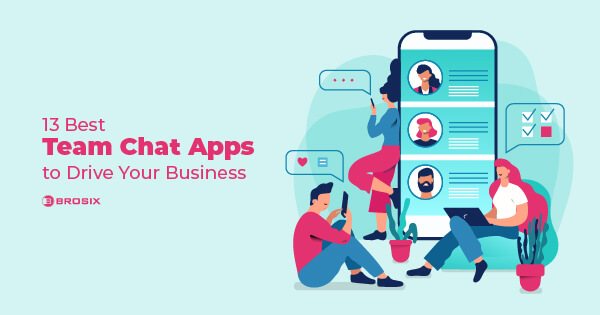Staying organized at work can often turn into a real challenge – especially when working remotely.
Even if you work in an office, the challenge remains the same, albeit in a different setting. There are just so many things to keep up with: appointments, deadlines, people, tasks, apps, clients. And unless you stay organized, you can easily drop the ball and forget to do something, run out of time, or simply drive yourself insane while trying to get to every single task.
[bctt tweet=”How to Stay Organized at Work”]
In order to save yourself the headaches, getting organized is simply the best thing you can do for your productivity and success. Let’s look at everything you can do to organize your work:
Classify your emails
Emails tend to take up an extraordinarily large portion of our day, yet there is absolutely no need for this to keep happening.
Our first tip for being organized at work is to dedicate time slots for emails – and don’t look at your inbox at any other point in the day. This can be an hour in the morning, or an hour after lunch, or an hour right before you leave work.
If you get a lot of emails and need to get back to people in a timelier manner, you can set up several intervals for emails, as opposed to just one.
Next, you should find a way to classify your emails. You can:
- star important emails
- leave unread the ones you need to take care of
- use a combination of the previous two suggestions
- take things to the next level and set up labels for different aspects of your work
You can label emails by task, client, deadline, level of urgency, and even color-code them accordingly.
Make lists
Being organized at work is a lot about having your eye on all these different balls at all times. One of the best ways to do that is to write lists.
And we don’t just mean the simplest to-do lists that spell out what needs to be done on a given day.
Write lists for the smallest of tasks, and have different lists for different things. For example, have a master email list, and write down who you need to get back to. Have daily vs. weekly lists, or have lists for the morning and the afternoon.
You can also compile lists of things that are not necessarily work-related, like things to buy, wiping your monitor, changing your mouse batteries, or watering the plant.
Opinions vary about writing lists on actual paper as opposed to keeping virtual lists – try out both and choose which works better for you.
Set up reminders
We all make the mistake of expecting to remember all sorts of things, from birthdays to passwords to appointments. And while at first it might be easy to remember all of them at the right moment, after a while our memory gets crowded with all the new information. As a result, it’s no longer as easy to remember something we were told a week ago.
To ensure you’re getting organized at work, start setting up reminders for all kinds of things – fifteen minutes before a meeting so you don’t forget to grab a drink and tidy your hair; on the day of someone’s birthday so you don’t forget to send a message; days before a deadline so you remember to start working on that specific task.
Make sure the app you use for these reminders goes off on a device that is always near you (your phone, more likely than not). However, if the reminder goes off while you are not at work, snooze it rather than just tick it off. After all, the goal behind the reminder is to complete the action in question, not to just hope to remember that the alarm has gone off.
Have one calendar only
Some people like to have different calendars for different things – work tasks, personal to-dos, events like birthdays or anniversaries. This can get quite messy quite quickly. So as you are looking for ways to stay organized at work, merge all of these calendars into one.
Sure, this may mean that things like “pick up dry-cleaning” mix in with “meeting with the accountant 4 PM.” But it will provide a much more comprehensive overview of your day.
You can easily color-code all of these tasks. Just make sure to schedule your personal to-dos for after-work hours.
While we’re on the subject of calendars, make sure you always have a digital one you can reach for (or alternatively, carry your physical calendar notebook with you at all times). That way, you’ll be able to stay organized even in situations when you’re not at home and you get alerted to a task that will need your attention at some future point.
Analyze your performance
While you have this handy calendar around, use it to analyze your performance and see how you can organize your work even better in the future.
We often tend to book things randomly – let’s say, you set aside an hour for emails in the morning. However, you actually only need 30 minutes on most days, which now means you have an extra half an hour you can spend on something else.
True, once you are done with the emails, you can grab the next task, but this fault in your planning mechanism can cause issues. For example, you may have trouble scheduling a call, when all the time you had these perfectly viable 30 minutes at your disposal.
To get to the bottom of your performance and the way you organize your time at work, you can export your calendar to Excel and work with data there. It will make it much easier to group similar tasks, search for similar appointments, and get a better idea of where and how you spend your time.
This analysis can also tell you when you are at your most productive, so you can then proceed to schedule your future tasks accordingly.
Take a break
The more you work, the less efficient you become – which is where breaks come into the picture.
Breaks are incredibly underrated in the world of work. But if you want to learn how to be more organized at work, breaks are simply essential.
We have somehow made ourselves believe that we will be more efficient and productive if we just keep at it and keep working, but the exact opposite is true. Our bodies and especially our minds need breaks in order to recharge and recover from the mental strain of completing tasks.
If you can’t trust yourself to take a break, schedule them just like you would a meeting or a call. When the time for the break arrives, execute it like you would any other task.
Don’t view breaks as slacking off, either – consider them a boost in productivity and performance.
Consider how you communicate
One of the best tips for getting organized at work is to examine the way you communicate with others, especially the people from your own organization. Are there a lot of emails involved? Do you use five different apps to keep in touch or collaborate?
Instead of all the confusion different apps can cause, you can use an instant messaging app for business. With Brosix, for example, you can chat one-on-one or in groups, or via crystal clear voice or video calls. You can also share your screen, transfer files, and collaborate with the virtual whiteboard.
Better yet, with Brosix you’ll have on hand the ability to manage users, features, communication spaces, activity logs, and more. So you can keep your communication and collaboration organized in a way that suits your team and your business.
Having a good communication app makes it much easier to work remotely. With one app at your disposal for everything, you’ll significantly cut down the time you waste trying to get a simple point across, or making sure everyone’s on the same page. You’ll no longer have to wait for someone to show up. And you won’t have to improvise ways to share information, especially if it’s highly visual.
Share files efficiently
The way you share files will also help you organize your work. If you have everything in your inbox, you will need to keep going back to it and searching for different files. And if you don’t actually know what they are called, this can lead to a whole lot of superfluous effort.
You can, of course, use cloud services to share files between different people. This is one of the more popular ways to manage sharing, but it does come with a few risks – most notably, security. While the cloud is often considered safe without question, the fact is that breaches happen every day, and you don’t want to inadvertently put any of your data at risk.
On the other hand, you can simply transfer files between users directly, like with Brosix’s peer-to-peer file transfer. It’s an easy way to keep your files protected and available only to authorized users. As Brosix private team networks are closed, you can worry less about security.
Use a productivity app
We all fall into the habit of procrastination. While we don’t do it intentionally (most of the time), we still get distracted and manage to fall into a dark hole of not exactly being productive.
In order to stay organized and productive at work, reach for the help of a productivity app. As there are hundreds of them out there on the market, finding one that fits your needs shouldn’t be a problem.
Make sure you are actually using the app, though. Don’t just install it on your phone or computer and expect it to motivate you intrinsically. Log your tasks and hours, use its features and prompts, and allow yourself plenty of time to get used to it.
At first, it’ll certainly demand some of your time. In addition to setting it up, you need to form the habit of using it – adding to-dos, ticking off things from lists, clocking time. That said, after the initial adjustment period, you should start to notice how it points out your harmful habits – procrastination, surfing, logging into social media at work, spending too much time on certain tasks, etc.
It will also help you uncover what you need more time for and how best to organize your work to ensure you are tackling tasks at the most appropriate level of alertness and creativity.
Make sure you are getting enough sleep
Sleep is another underrated factor in work organization. Yet if you are looking for tips to stay organized, it’s probably one of the best ones anyone can offer.
Sleep impacts all kinds of mental and physical processes. It boosts your immune system, keeps you creative and alert, helps you make the right decisions, and balances your emotions.
The relationship between remote work and sleep is even more important. It’s easy to fall into a vicious cycle of working late, sleeping less than you need to, and waking up tired every day.
To stay organized, you need to be able to focus and perform to the best of your ability on most days – which is why sleep should be one of your top priorities.
Pencil in a workout
Finally, there’s also the matter of exercise, and it’s closely related to our previous point.
When you are working remotely, you don’t even have the obligation to get up and go to work. You can stay indoors all day and move very little. But this lack of movement and exercise will quickly impact your wellness. You may start to lose focus, get tired more easily, and not sleep as well. And this will mean that, despite your best efforts to stay organized, you simply won’t be able to do it.
Make time for a home workout at least 3-4 times a week. You don’t have to do anything too exhausting or excruciating, but a light workout will help you stay organized, healthy, and content.
Final thoughts
We’ve all asked ourselves how to be more organized at work. And while it will certainly take effort, and probably some time as well, little by little you can become more organized if you do your best to adopt some of the practices we’ve listed here.
[bctt tweet=”How to Stay Organized at Work”]
Remember that habits are not formed overnight. You may have to keep reminding yourself to do these things and persevere. But don’t worry – after a while, it will become second nature, and you won’t have to think about it anymore. You will simply have become more organized at work.




